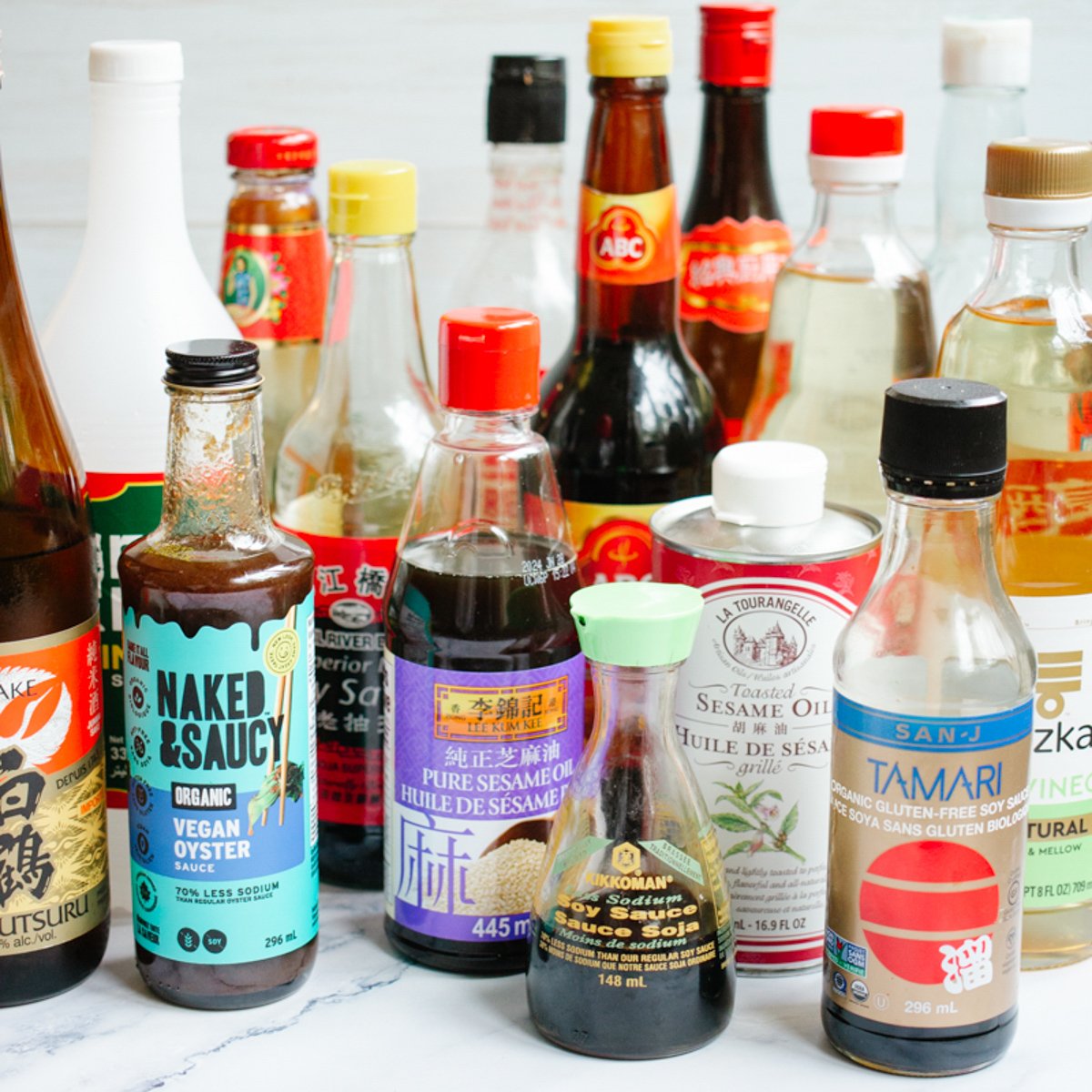Asian pantry items are crucial. Whether you’re just getting into Asian cooking or adding new flavors to your repertoire, fusing Asian flavors into your home-cooked meals is easier than ever with the right Asian items.
Here is the link to my Amazon Store
Nailing the basics of an Asian pantry will open up a world of possibilities for creating authentic and delicious dishes. Asian cuisine offers a wide range of flavors, textures, and aromas that rely on certain items, from staples like soy sauce and vinegar to more unique ingredients like sake and oyster sauce.
The good news is that most of these Asian items are widely available in the Asian section of large grocery stores, Asian supermarkets, and online, so you can easily stock up your pantry with all the essentials! They are budget-friendly too, so you won't have to break the bank to get your Asian cooking journey started.

Here's a list of must-have items for your Asian pantry:
1. Cooking Wine
Many Asian dishes call for some type of cooking wine to add a certain depth and complexity of flavor. It is usually made with fermented rice, and like drinking wine, it can range from dry to sweet.
The alcohol content of cooking wines ranges from 14% to 25%. Don't worry, the alcohol evaporates during cooking so that you won’t get drunk from your meal!
In Chinese cuisine, Shaoxing rice wine or Chinese rice wine has a light amber color, sweet flavor, and rich aroma that adds an amazing boost of flavor to sauces and marinades like in my 3 Cup Chicken recipe, as well as stir-fries and braised dishes.
Mirin and sake are popular Japanese cooking wines that have similar flavor profiles. Mirin is a sweet rice wine that has a slightly lower alcohol content than sake, while sake is an alcoholic beverage with a slightly dry flavor that pairs nicely with mirin, like in Air Fryer Teriyaki Chicken Thighs and Air Fryer Teriyaki Salmon.
2. Fish sauce
Fish sauce is a key ingredient in many Southeast Asian dishes, such as Thai and Vietnamese cuisine. It is an all-purpose seasoning made from fermented fish like anchovies and salt, resulting in a salty, savory liquid with a pungent smell.
When used in small amounts, fish sauce adds an umami flavor to dishes that cannot be replicated with other ingredients. Just remember that a little goes a long way with fish sauce, so start with small amounts and add more to taste.
Fish sauce is used to make dipping sauces like the popular Vietnamese Nuoc Cham and marinades like in Caramel Chicken and Lemongrass Drumsticks.
3. Oyster sauce
Tasting oyster sauce for the first time can be a bit of an acquired taste. It has a salty and savory flavor with hints of sweetness, and has a thick consistency that nicely coats noodles like in Asian Garlic Noodles, vegetables like in Sesame Braised Cabbage, and meats like Spicy Sesame Chicken.
Oyster sauce is made from boiled-down oysters, salt, sugar, soy sauce, and other seasonings. Some brands of oyster sauce contain wheat flour as a thickener so it may not be suitable for those who are gluten intolerant. But you can easily find gluten-free and vegan options too!
4. Sesame oil
Dishes like Honey Sesame Chicken and Asian Cabbage Rolls aren’t complete without the nutty, rich flavor of sesame oil. It is made from either raw or toasted sesame seeds which are ground and pressed to extract the flavorful oil.
Sesame oil has a golden color and nutty aroma that adds an unmistakably fragrant aroma and deep flavor to many Chinese, Japanese, and Korean dishes.
The general rule is to use regular sesame oil for cooking, such as shallow frying, and toasted sesame oil for finishing. The regular one has a high smoke point and is milder and lighter in color and flavor than the toasted one.
Both have very strong flavors, so they should be used sparingly as an accent rather than as a base for any dish.
5. Soy sauce
Possibly the most iconic ingredient in Asian cooking is soy sauce. It is a fermented condiment made from soybeans, wheat, and salt that adds a salty, umami flavor to dishes.
There are many types of soy sauces used in Asian cuisine, but the three main ones are regular, light, and dark varieties. Regular soy sauce is the most versatile and can be used in most types of dishes. On the other hand, light soy sauce has a more delicate flavor, while dark soy sauce is thicker and richer than the two.
Sometimes, light and dark soy sauces are blended to end up with a nice color and a balanced flavor profile, like in my Chicken Scallion Noodles.
There are also low-sodium versions available for those who want to reduce their sodium intake without sacrificing flavor, as well as gluten-free versions like tamari which generally has a bolder flavor.
If you’re looking for something sweet than salty, try sweet soy sauce or Kecap Manis, an Indonesian condiment widely used in marinades, glazes, and stir-fries.
6. Vinegar
Any Asian pantry would not be complete without vinegar of all kinds. Used in dips, marinades, and sauces, vinegar is essential for enhancing the flavor of a dish by adding mild acidity.
Rice vinegar is one of the most commonly used vinegar in Asian cuisine that has a subtle sweet flavor that pairs well with soy sauce, oyster sauce, and other seasonings like in Asian Beef Short Ribs. Don’t get confused with rice vinegar and rice wine, as they have different flavor profiles and uses.
Unique to the Philippines, cane vinegar (known under the brand Datu Puti) is a popular ingredient used in dishes like Pork Belly Adobo and sinigang (stewed pork or fish). It is made from fermented sugarcane juice that has a milder taste than other types of vinegar.
